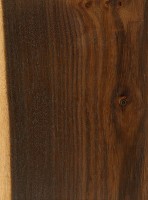 |
Common Name(s): Texas Ebony Scientific Name: Ebenopsis ebano Distribution: Southern Texas and eastern Mexico Tree Size: 20-30 ft (6-9 m) tall, 1-2 ft (.3-.6 m) trunk diameter Average Dried Weight: 60 lbs/ft3 (965 kg/m3) Specific Gravity (Basic, 12% MC): .77, .97 Janka Hardness: 2,820 lbf (12,560 N) Modulus of Rupture: 22,090 lbf/in2 (152.3 MPa) Elastic Modulus: 2,398,000 lbf/in2 (16.54 GPa) Crushing Strength: 10,740 lbf/in2 (74.1 MPa) Shrinkage: No available data |
Color/Appearance: Heartwood is a dark reddish (sometimes purplish) brown to nearly black. Pale yellow sapwood is clearly demarcated from heartwood. Heartwood ages to almost black.
Grain/Texture: Grain can be irregular or wild. Has a fine, uniform texture with a very good natural luster.
Endgrain: Diffuse-porous; large pores in no specific arrangement, few to moderately numerous; solitary and radial multiples of 2-3; heartwood gum deposits (reddish brown) common; growth rings indistinct; narrow rays not visible without lens, spacing normal; parenchyma vasicentric, lozenge, and confluent.
Rot Resistance: Reported to be very durable regarding decay resistance.
Workability: Can be difficult to work on account of its density, but turns superbly, and able to take a very high natural polish.
Odor: No characteristic odor.
Allergies/Toxicity: Besides the standard health risks associated with any type of wood dust, no further health reactions have been associated with Texas Ebony. See the articles Wood Allergies and Toxicity and Wood Dust Safety for more information.
Pricing/Availability: Not commercially harvested for lumber, small pieces of Texas Ebony can sometimes be found for sale on a very limited basis for hobbyist and specialty applications. Knots, checks, and other deformities are common in larger pieces. Expect prices to be very high for a domestic species.
Sustainability: This wood species is not listed in the CITES Appendices, and is reported by the IUCN as being a species of least concern.
Common Uses: Knife handles, inlay, fine furniture, turned objects, and other small, specialty wood items.
Comments: In addition to Desert Ironwood, Texas Ebony might be considered one of the only “exotic” hardwoods that’s native to the United States.
Though it’s not a true ebony in the Diospyros genus, it’s perhaps the only native wood that’s dark enough to serve as a respectable ebony substitute. (And, like most respectable ebony substitutes such as Katalox or Wenge, it’s also very expensive.)
None available.


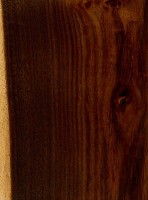
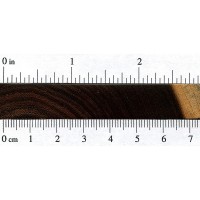
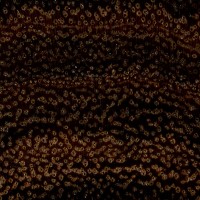
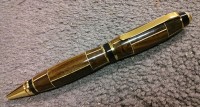
Knife handle made from Texas Ebony.
I made chess pieces for my grandson with Texas Ebony. Sapwood for the white and heartwood for the black. Nice wood.
My piece comes in at 66 lbs/ft³, and it has some sapwood.
I attempted to use some Texas Ebony as accent strips in some coasters. They looked great, but wouldn’t stay glued together with the other woods. Tried 2 kinds of glues, sanding the surface before gluing, but the pieces kept separating.
Wiping it down with acetone will remove surface oils so gluing it’s finishing will be a lot easier.
I have 7 rings in the making + 1 I have to re-make a third time. I am having some trouble with this “Texas Ebony” The ring has broken twice in the drilling process. I have not had this problem with the other wood types. So I am wondering if anyone else has had a problem working with Texas Ebony that they would be willing to share with me?
How do u remove a dead Ebony stump?
If it’s dry light a fire on it that’ll get rid of the stump.
put a salt lick on it the stump.It will turn into a salt lick ,deer and hogs will chew it away.
I definitely disagree that this wood has no odor. It smells horrible when being turned, like rotting earth. It’s absolutely gorgeous once turned, though.
I agree that it has an earthy smell. I don’t find it unpleasant though.
My shop smell of it and turnings produce an odor but the beauty of the finished pieces makes it worth it.
I have 7 ebony trees growing in my y
I have turned severl things from texas ebony but have a hard time finding any .
walt
That is because it is not commercially available, and people who cut them down view them as “trash trees” and send the stumps to the dump.
Nothing wrong with a little dumpster diving;)